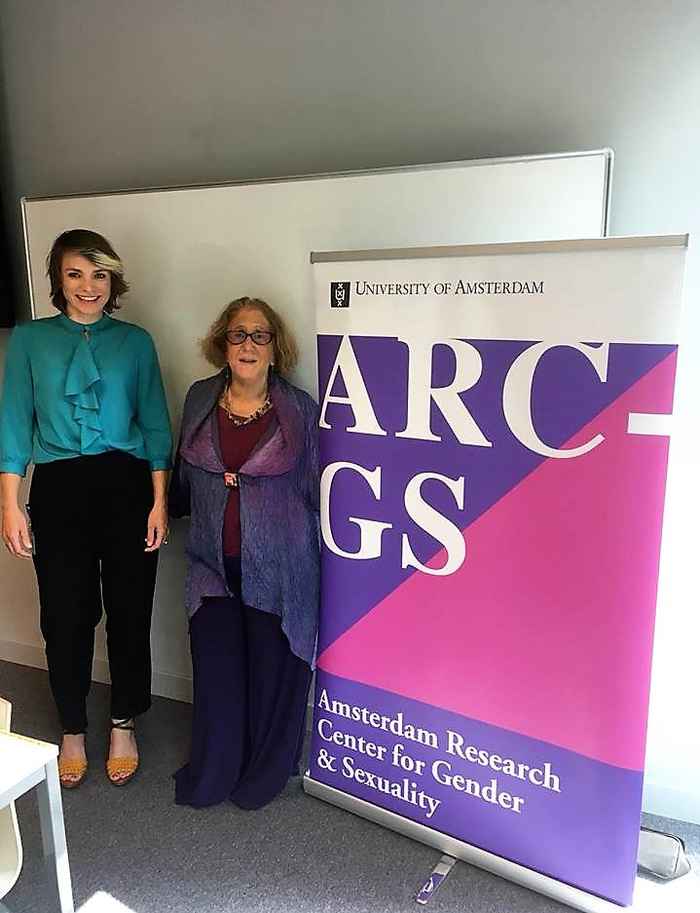“Where the Millennials will take us: A new generation wrestles with the Gender structure” Lecture by Prof Barbara Risman (Distinguished Professor of Sociology at the University of Illinois at Chicago)
By Simone Schneider
Accounting for multi-level influences
Various actors claim in public debates that while a lot of progress was achieved regarding women’s rights in the past, this momentum has stalled at the end of the 1990s. Consequently, scholars try to unfold the underlying reasons for this process and raise different viewpoints. Hereby, Risman argued that, aside from socialized and internalized characteristics, it is important to also include external structures as well as interactional influences when examining gender and sexuality in society. In modern societies, gender serves as a structural framework that affects society in a powerful manner, strongly influencing how individuals organize their lives and interact with each other.
Millennials struggling with gender structure
Building on a multi-level theoretical background, Risman researched in over 100 interviews how millennials, thus individuals born between 1985 – 1995, experience and struggle with the societal gender structure. This was a diverse sample including various gender and sexual identities. Based on the empirical results, Risman carved out four overall groups that represent how millennials deal with the societal gender structure in their daily lives.

First category – “True Believers”
Within the first group labelled the “True Believers”, individuals argue that men and women are and should be different and therefore have to learn and acquire gender-specific knowledge. This assumption is often justified through religious or biological reasons and based on an internalization of gender as a personality trait. While assuming that the two sexes are essentially different, individuals within this category still emphasize the necessity for women to join the labor force. That can be explained through a cultural change whereby being feminine as well as working for one’s living are no longer considered to be contradictory.
Second category – “Innovators”
Secondly, the individuals belonging to the group “Innovators” aim at undoing gender, as they reject a society primarily structured by gender. Therefore, interview partners consciously mix and match feminine and masculine traits within their personality and daily activities. Yet, men grouped within this category are subjected to a higher extent to gender norms, to police their masculinity, than women due to peer pressure and policing.
Third category – “Rebels”
Similarly to the “Innovators”, the “Rebels” reject the gender structure and are, moreover, very conscious of aiming for change through their bodies, for example through not using their bodies as a representation of their gender. In this category, individuals often identity as trans- or queer-gender and perceive themselves as non-conforming for their gender. They also experience being oppressed by social institutions through constant policing. In addition, the transgender respondents within this group are not invested in traditional displays of masculinity or femininity.
Fourth category – “Straddlers”
The individuals in the fourth group “straddle” the societal gender structure. Thus, their opinions and attitudes regarding gender and sexuality do not appear solidified or cohesive but chaotic and contradictory. They are overall comparably uncomfortable with gender non-conformity. In addition, Risman demonstrated that certain aspects prevail within all four of the described groups, such as perceptions of one’s own body as not being “good” enough.
Deriving policy implications
Based on these empirical findings, Risman argued that the societal gender structure still serves as a master status according to which the world is primarily organized. As that structure leads to unequal opportunities related to gender norms, it is necessary to dismantle the structure and move beyond the gender binary. That can be achieved through decreasing the impact of gender norms and categories for people’s lives on different levels. One way to do that is to introduce an improved care infrastructure. Hereby Risman demonstrated the need to move towards a post-gender society in which a world without a dominant gender binary can be envisioned.